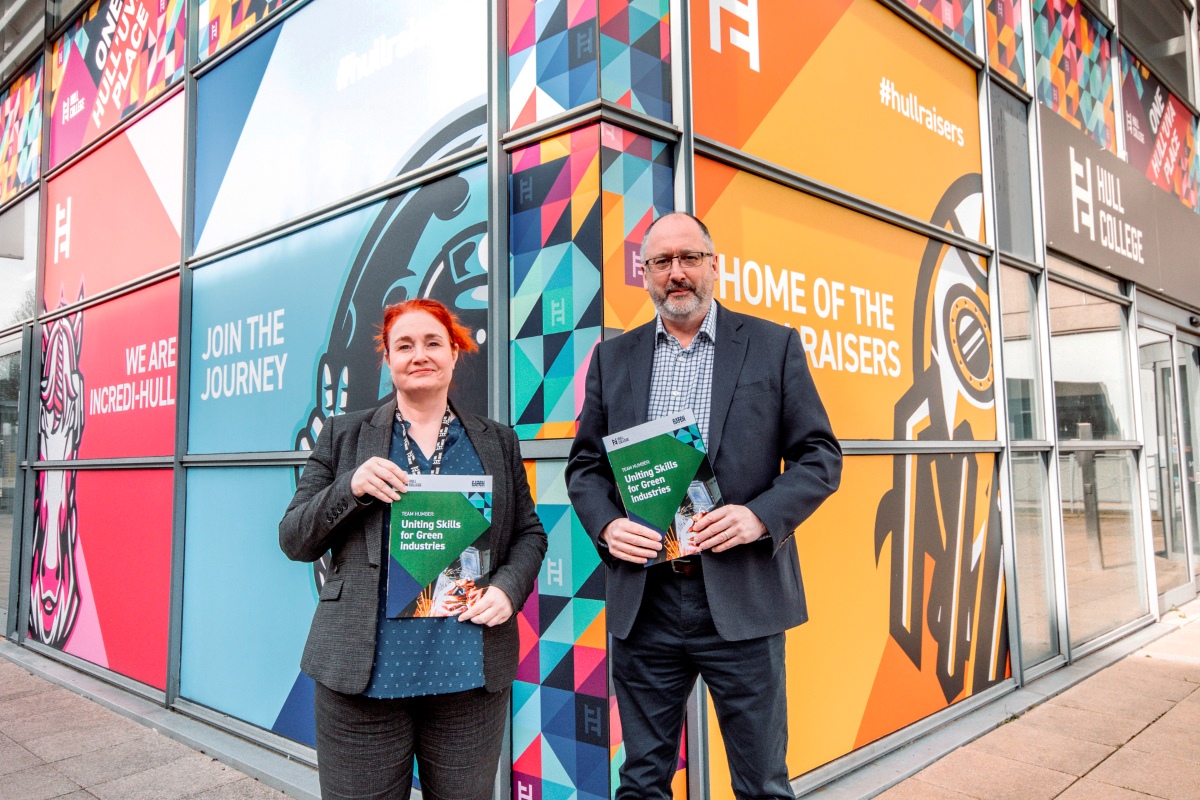Detailed guide: Industry placements: capacity and delivery fund (CDF) for 2020 to 2021 for providers in receipt of CDF in academic year 2019 to 2020

Information for 16 to 19 providers of industry placement(s) capacity and delivery funding (CDF) from academic year 2020 to 2021 already in receipt of a CDF allocation.
Purpose
The purpose of this information is to detail the arrangements for delivering industry placements through the CDF in 2020 to 2021 academic year for those providers in receipt of an allocation from the CDF in 2019 to 2020 academic year.
Background
CDF is now in its third year of delivery. Providers were initially required to complete an implementation plan to access this funding and the Department assessed these plans to ensure they were complete. Funding for the CDF has been included in allocation statements for 2018 to 2019 and 2019 to 2020 academic year, as has the number of funded students and the minimum number of placements to be delivered by the end of each academic year.CDF is to facilitate the build-up of capacity and capability to deliver substantial industry placements and deliver such placements from the 2018 to 2019 academic year. The placements being delivered are for students on vocational and technical study programmes at level 2 and level 3. It is recognised that the delivery of significant numbers of industry placements as part of T Levels is a significant step change for the sector. This is why this funding has been provided now to help build capacity ahead of the roll out of T Levels, from 2020, which industry placements will be a compulsory part of.
Funding for CDF in 2020 to 2021 academic year will be dependent on the outcome of the Spending Review, therefore we are unable to commit to CDF funding in 2020 to 2021 academic year at this stage.
Changes from 2019 to 2020 academic year to 2020 to 2021 academic year
For 2020 to 2021 academic year, we are increasing the proportion of qualifying students for whom we are requiring an industry placement to be provided from 20% to 30% of your qualifying students.
As T Levels are confirmed as level 3 programmes, we are increasing our emphasis on level 3 students in 2019 to 2020 academic year. Therefore, for delivery in 2020 to 2021 academic year we are reinforcing the requirement to prioritise level 3 placements. Providers will be required to deliver at least 20% more level 3 placements compared to their baseline split between level 2 and level 3 qualifying students.
For example – a provider with 1,000 qualifying students, split equally between L2 to L3 (500 students at L2 and 500 at L3):
- they will need to deliver a placement for 30% of their qualifying students, so 300 placements
- this is a baseline of 150 level 3 students in a placement
- the minimum number of placements for level 3 students would be to increase the 150 by 20%
- therefore, a minimum of 150 x 1.2 = 180 level 3 placements during 2020 to 2021
To calculate this we will look at the proportion of qualifying students that were on level 3 study programmes in 2018 to 2019 academic year, apply that proportion to the minimum number of placements required in 2020 to 2021 academic year, increase the level 3 delivery by 20% and then calculate the minimum number of level 3 students we expect to be on a placement in the year.
Giving priority to Level 3 Students for CDF Industry Placements examples
Giving priority to Level 3 Students for CDF Industry Placements examples
PDF, 527KB, 2 pages
Links to T Levels
CDF is not linked directly to T Levels, and funding will allow for the development of students on a vocational programme to undertake a substantial industry placement. In future years as T Level development progresses the allocation of funding may be more closely aligned to programmes with a more direct link to T Levels. How industry placements as part of a T Level will be funded is included on GOV.UK. One of the key principles of an industry placement is it should be occupationally specific and focused on developing the practical and technical skills required for the profession or trade the student is studying for.
As T Levels are rolled out, we will investigate making future funding conditional on placements being completed. Details for how this could work are included in the government response to the T Level funding consultation. Over time, the delivery of industry placements will become a requirement of the T Level programme completion and at that point will be monitored via accountability measures through ILR/school census and HESA data. Additional funding will be available to support delivery of T Level programmes in future.
2019 to 2020 academic year monitoring form requirements
For 2020 to 2021 academic year, we will continue with our principles of funding capacity building activity alongside delivery of Industry Placements. To avoid asking providers for separate monitoring forms and implementation plans we have combined these 2 functions into a single monitoring form.
To receive CDF funding for 2020 to 2021 academic year all providers, that received CDF for 2019 to 2020 academic year, will be required to submit monitoring forms. The monitoring forms are a compulsory return and without a completed monitoring form (due in 1 December 2019, 1 March 2020 and 11 June 2020), ESFA will not make an allocation for CDF in 2020 to 2021 academic year.
The arrangements for submitting monitoring forms during 2019 to 2020 are detailed in our on line guidance on GOV.UK.
2020 to 2021 academic year monitoring form requirements
During the 2020 to 2021 academic year, monitoring forms will continue to be required as a condition of funding, as they will fulfil a number of functions. Firstly, they will demonstrate a commitment from the provider to building capacity and capability within their organisation to deliver high quality, substantial industry placements. Secondly, they will allow the provider to describe the progress made in delivering industry placements. Thirdly, they will provide information on how delivery will be scaled up to deliver the 30% requirement for 2020 to 2021 academic year and how a provider plans to utilise the allocation to do so, and finally they will allow the Department to assess if sufficient progress has been made to qualify for future allocations.
The monitoring form will ask for a description of progress on actions that the provider will take to deliver placements and for an outline of how this additional funding will be used to lead to high quality industry placements for qualifying students. The deadline for the first monitoring form is 1 December 2020, and the deadline for the final monitoring return is 11 June 2021.
Principles of a substantial industry placement in 2020 to 2021 academic year
A number of flexibilities and updated delivery models for Industry Placements were introduced from 2019 to 2020 AY.
The industry placements delivered with this funding must be:
- delivered to the published standards and principles
- a minimum of 315 hours in length, with an expected average within each provider of 350 hours (this excludes 1 hour per day for lunch). Whilst a typical working day on a placement is between 7 to 7.5 hours, the total 315 hours can be delivered at the discretion of the provider in accordance with the needs of the employer and the student (for example, if shorter days are required, or to accommodate different industries’ working patterns)
- occupationally specific and focused on developing the practical and technical skills required for the profession or trade that the student is studying for (Digital placements may be industry-specific where students develop general Digital knowledge and skills, as opposed to being occupationally specific)
- taking place normally with a single employer but in all cases with a maximum of 2 external employers that is; on a site external to the student’s learning environment independent of their fellow students and teaching staff, with the exceptions of
- students in Young Offender Institutes who may spend the full duration of placement within on-site facilities; and
- students with Special Educational Needs or Disabilities may spend a maximum of 105 hours of the placement within a providers’ on-site facilities
- Construction: Students who can complete a Commercial, Charitable or Community Project for a maximum of 105 hours of their placement, with the remaining hours spent with an external employer
- Construction and Engineering & Manufacturing: Students who can spend a maximum of 105 hours of their total hours within an already established Skills Hub or Training Centre: in such a case, students will then need to complete the remainder of their placement with this same employer
- arranged with set learning objectives that are agreed between the employer, student and provider (note: the same objectives are to be worked towards even if a placement is conducted with more than one employer)
- adequately supervised by a named member of the employer’s staff
- monitored by actual site visits from the provider, with review meetings at the start, middle and end, with each employer, at a minimum to review the student’s progress, and supplemented by more informal engagement and communication throughout
And should also:
- be delivered within the academic timetable as far as possible but we recognise in some occupations, peak times will either be seasonal or fall outside the providers’ normal working hours, such as catering, hospitality or events management
- deliver a real life job role
- have learning aims agreed at the start of the industry placement between the provider/employer(s)/student and progress must be monitored throughout
Providers should ensure that students with Special Educational Needs will (as far as possible) be able to access the same quality of industry placement provision as their peers.
Industry specific placements only
- Construction: Students can now complete a Commercial, Charitable or Community Project for a maximum of 105 hours of their placement, working closely with an external employer to develop appropriate technical skills. The rest of the hours should be spent individually with an external employer to ensure the student gains experience of the workplace working independently from peers
- Construction and Engineering & Manufacturing: Students can now spend a maximum of 105 hours of their total hours within an already established Skills Hub or Training Centre: in such a case, students will then need to complete the remainder of their placement with this same employer
- Digital: Students studying a Digital course can now undertake a placement at route level so that it develops their general Digital knowledge and skills as opposed to those only relevant to their specific specialism
Occupationally relevant part-time work
A student’s part-time working hours can be counted towards the required hours of placement, as long as the job is occupationally related to the students’ chosen specialism at Level 3, appropriate learning objectives are set and worked towards, and it takes place at an environment away from the provider setting and the student’s normal learning environment.
Qualifying students
To confirm eligibility for 2020 to 2021 academic year we will initially use 2017 to 2018 academic year student data to calculate provisional qualifying student numbers. For the final allocation for 2020 to 2021 academic year we will use actual year-end 2018 to 2019 student data.
As in previous years, students that meet all the following criteria will be treated as qualifying students for CDF in 2020 to 2021 (subject to the comprehensive spending review):
- students that are full time, that is those with total planned hours recorded as above 540 if aged 16 or 17 and 450 hours for an 18-year-old. This includes High Needs Students (HNS) that have met the qualifying start period for their study programme
- students aged 16, 17 and 18
- students aged 19 to 25 with an educational health care plan (EHCP) are included. (students who are 19 to 25 years old without an EHCP, at the beginning of their 2-year programme are not included)
- students who are enrolled on a level 2 or level 3 programme, with a vocational core aim, which might be included in the technical education routes planned for introduction from 2020 to 2021 academic year. A list of qualification types included is set out below. It should be noted that General Vocational Qualifications are included but Applied General Qualifications (AGQs) are not. Though relevant AGQs will be regarded as counting towards the minimum delivery target in 2020 to 2021 academic year, they continue to be excluded for the purpose of allocations
A list of excluded AGQs is available below. The list of excluded AGQs applied to the 2018 to 2019 data used for the purpose of allocations will be updated in autumn 2019.
The above criteria in no way indicates which qualifications will be subject to defunding in the future.
List of Excluded Applied General Qualifications for allocations
PDF, 576KB, 2 pages
List of Excluded Applied General Qualifications for allocations PDF, 200KB, 5 pages This file may not be suitable for users of assistive technology. Request an accessible format.
If you use assistive technology (such as a screen reader) and need a version of this document in a more accessible format, please email [email protected]. Please tell us what format you need. It will help us if you say what assistive technology you use.
Qualification types at levels 2 and 3 included in identification of qualifying students
The qualification types included in identifying qualifying students are listed below:
- Advanced Diploma
- Associate Diploma
- Award
- Certificate
- Certificate of Competence
- Diploma
- Diploma (14 to 19)
- Edexcel First Diploma (new syllabus)
- Edexcel First Extended Certificate (2012 onwards)
- Edexcel National Award
- Edexcel National Certificate (new syllabus)
- Edexcel National Diploma (new syllabus)
- First Certificate
- Introductory Certificate
- National Certificate
- National Diploma
- National Extended Diploma
- National Vocational Qualifications
- Principal Learning within Diploma (14 to 19)
- Professional Diploma
Qualifications that count towards the CDF target for the 2020 to 2021 academic year onwards
In 2020 to 2021 academic year onwards, we are keen to ensure that CDF facilitates capacity building in the right areas. Therefore, providers will be expected to arrange industry placements for students studying relevant qualifications only to count towards the 30% delivery target. This will be based on the revised list of relevant Sector Subject Areas below.
Subject sector areas
PDF, 374KB, 1 page
Qualifying provider
Providers funded by the ESFA for 16 to 19 study programmes with qualifying students as defined above are eligible to apply for CDF. This inclusive approach allows almost all providers currently offering vocational programmes that could evolve into one of the Technical Education Routes to receive an allocation. Allocations will be based on the number of qualifying students enrolled with each provider in 2018 to 2019 academic year.
To qualify for funding providers will need to have an Ofsted overall effectiveness grading of “Requires Improvement” or better. In addition, the Department for Education reserves the right not to make an allocation where a Notice to Improve is in place, where a provider is at risk of financial difficulty or where there are any other known issues that could prevent or affect quality delivery.
Allocation of funding for 2020 to 2021 academic year (subject to the spending review)
The funding methodology reflects current delivery and made the funds widely available to providers that met the criteria and deliver full time Technical Education at levels 2 and 3. Allocations will be made to those providers that meet the criteria, opted in, submitted a completed Implementation plan (subject to the comprehensive spending review).
We will base the level of funding for each provider on the number of qualifying full-time students, at a rate of £250 per student enrolled on eligible programmes.
To qualify for funding providers will need to have an Ofsted overall effectiveness grading of “Requires Improvement” or better. In addition, the Department for Education reserves the right not to make an allocation where a Notice to Improve is in place, where a provider is at risk of financial difficulty or where there are any other known issues that could prevent or affect quality delivery.
Providers should be clear that access to the CDF does not imply future eligibility to deliver or receive funding for the development or delivery of T Levels. We will monitor delivery of industry placements in 2019 to 2020 AY via your monitoring forms.
Opting in for an allocation in 2020 to 2021
We expect that providers that received a CDF allocation in 2019 to 2020 academic year will also take advantage of the funding that is provisional for 2020 to 2021 academic year. The monitoring form has been designed to let the Department know your intention to deliver industry placements in 2020 to 2021 academic year by choosing whether to opt in or out of CDF in 2020 to 2021.
By “opting in” for CDF in 2020 to 2021 academic year and completing the monitoring form, providers will be agreeing to:
- utilise the funding available to build capability and capacity for delivery of high quality substantial industry placements
- the delivery and completion of high quality substantial industry placements from the 2020 to 2021 academic year following the published principles set out on GOV.UK
- deliver and complete a set number of high quality substantial industry placements in 2020 to 2021 academic year, based on no fewer than 30% of the number of qualifying students
- prioritise the delivery of placements for level 3 students, as outlined in the section below giving priority to level 3
- providers that delivered industry placements from 2019 to 2020 academic year to complete two monitoring returns on 1 December 2020, and 11 June 2021and an additional return on 1 March 2021 if requested to do so
- conduct student satisfaction surveys
- to record all high quality substantial industry placements fully in the Individualised Learner Record (ILR), school census or HESA at each data return point
By “opting out” in one or more of your monitoring returns providers will be indicating to ESFA they do not wish to receive this funding for 2020 to 2021 academic year. If a provider has “opted out” for delivery of industry placements in one of the monitoring returns but would like to “opt back in”, then please contact us via ESFA enquiries.To opt out providers are asked to notify ESFA by selecting the appropriate answers on the monitoring form and completing a brief explanation, to inform future planning.
Supporting students financially
Information relating to supporting students financially can be found on GOV.UK.
Recording substantial industry placements
A requirement for receiving a CDF allocation is that you record all industry placements fully in the ILR, school census or HESA data at each data return point. We will be reviewing this data to cross refer the number of placements delivered to the delivery you record in your monitoring form. Therefore, you must ensure that each industry placement is recorded correctly, showing start and end date, and the number of planned hours.The learning aim reference number on the ILR and the school census specifically for recording industry placements is ZWRKX002 and must be used for monitoring and funding purposes which will help to differentiate between CDF industry placements and external work experience that forms part of the students’ Employability, Enrichment and Pastoral (EEP) study programme hours.
CDF industry placements are to take place on top of the existing study programme hours and providers have been allocated CDF funding in addition to mainstream funding for qualifying students. Therefore, industry placement hours must not be included in the planned hours recorded for the study programme.
It is also important to note that where hours are currently spent on work experience that is an existing and compulsory part of a study programme, these cannot be counted towards the industry placement hours delivered through CDF because providers are already being government funded for these through mainstream funding. This is unless students are able to do the required industry placement hours (minimum of 315) on top of those hours for the existing work experience that are recorded as planned ‘qualification hours’ on the ILR and school census.Clauses in our annual funding agreements/contracts for services with providers, include conditions relating to CDF funding:
- where a provider does not meet the minimum number of placements, the ESFA may seek to recover funds, and/or may take this into consideration when considering future CDF allocations
- where a provider is assessed to be financial health inadequate, or the provider / education and training provided is judged by Ofsted to be inadequate, the ESFA may withhold any remaining profiled allocations, and may take such assessments into consideration when considering future CDF allocations
- where the provider does not submit the monitoring returns by the dates published the ESFA may withdraw the 2020 to 2021 academic year CDF allocation and recover funding paid
These clauses may vary by provider type therefore it is advisable that providers become familiar with these new clauses in their Funding Agreements.
ESFA enquiriesContact form https://form.education… For all enquiries for the Education and Skills Funding Agency
Timeline for 2020 to 2021 allocations for providers receiving a CDF allocation for 2018 to 2019
| Activity | Date |
|---|---|
| Issue CDF Allocation statements for 2020 to 2021 | March 2020 |
| Deadline for first monitoring form submitted back for 2019 to 2020 for providers delivering in 2019 to 2020 academic year | 1 December 2020 |
| Feedback to providers regarding their first monitoring return in December | February 2021 |
| Deadline for second monitoring form submitted back for 2019 to 2020 for providers delivering in 2019 to 2020 (if required) | 1 March 2021 |
| Feedback to providers regarding their second monitoring return | May 2021 |
| Deadline for final monitoring form submitted back for 2019 to 2020 | 11 June 2021 |
| Feedback to providers regarding their second monitoring return in June | July 2021 |
| Confirm 2020 to 2021 CDF allocations to providers | July 2020 |
Published 17 July 2019 Contents















Responses